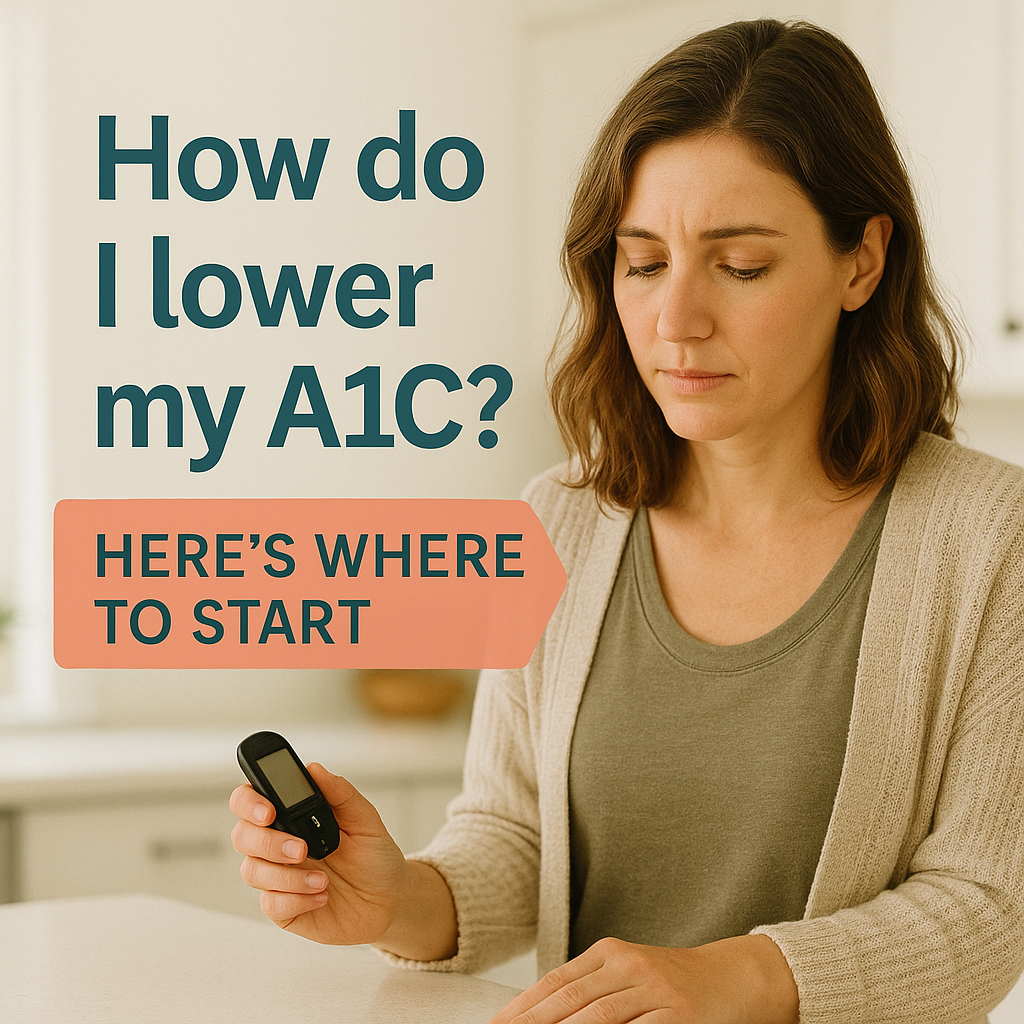How Do I Lower My A1C?
If you’ve found yourself searching for this exact question, I want you to know you’re not alone. I hear this all the time from women who are managing insulin resistance, prediabetes, or type 2 diabetes — and it’s a smart question to ask. Your A1C gives you a big-picture view of how your blood sugar has been doing over the last 2 to 3 months. So if your number is creeping up, or you’ve just been told your A1C is "too high," it’s totally normal to wonder what to do next. The good news? You don’t need to go extreme. Lowering your A1C is possible with consistent, realistic changes that support your body — without cutting out everything you love or turning your whole life upside down. Let’s walk through a few things that can actually make a difference:
1. Pair Your Carbs with Protein and Fiber
You don’t need to eliminate carbs. You just need to eat them in a way that works better for your blood sugar. When you eat carbs on their own (like a piece of toast or a banana), your blood sugar can spike quickly. But if you add protein and/or fiber to that carb, your body digests it more slowly, which means a gentler rise in blood sugar. This keeps things steadier, which helps bring your A1C down over time.
Simple ideas:
Apple + almond butter
Toast + eggs
Rice + beans
Crackers + cheese
2. Take a Walk After Meals
This is one of my favorite tips because it’s so easy and surprisingly effective. A 10- to 15-minute walk after eating helps your body use up the glucose (sugar) from your meal more efficiently. That means lower blood sugar levels after eating, and over time, a better A1C. You don’t need to go to the gym or do anything intense. Just move your body a bit after you eat. Walk the dog, clean the kitchen, or take a few laps around the block.
3. Prioritize Sleep
This one gets overlooked so often, but it’s incredibly important. When you don’t get enough quality sleep, your body produces more cortisol (your stress hormone), which makes your blood sugar harder to control. Improving your sleep routine can absolutely help bring your A1C down. Aim for 7–8 hours a night, try to keep a consistent bedtime, and limit screens before bed when you can.
4. Track Your Patterns (Not Just the Numbers)
Your A1C is helpful, but it’s an average — it doesn’t tell the full story. You could have a "normal" A1C but still be riding blood sugar rollercoasters every day. Start paying attention to how your body feels after different meals or habits. You don’t have to obsess over every bite, but noticing patterns (like feeling tired after certain meals or waking up super hungry) gives you real insight into how your blood sugar is behaving. You can use a CGM (continuous glucose monitor) or even a simple notebook to jot down meals and how you feel afterward.
5. Aim for Steady, Not Perfect
One of the most important things I want you to take away is this: lowering your A1C doesn’t happen overnight, and it doesn’t require perfection. You don’t have to be perfect. You just have to be consistent. The small things you do daily or most days — those are the things that move your A1C in the right direction.
Final Thoughts
If your A1C is high, or trending higher, don’t panic. You’re not broken, and you’re not stuck. You just need a plan that supports your body in a sustainable way. Start with one or two of these tips. Keep it simple. Give your body time to respond. You are more capable than you think.
— Kiley

